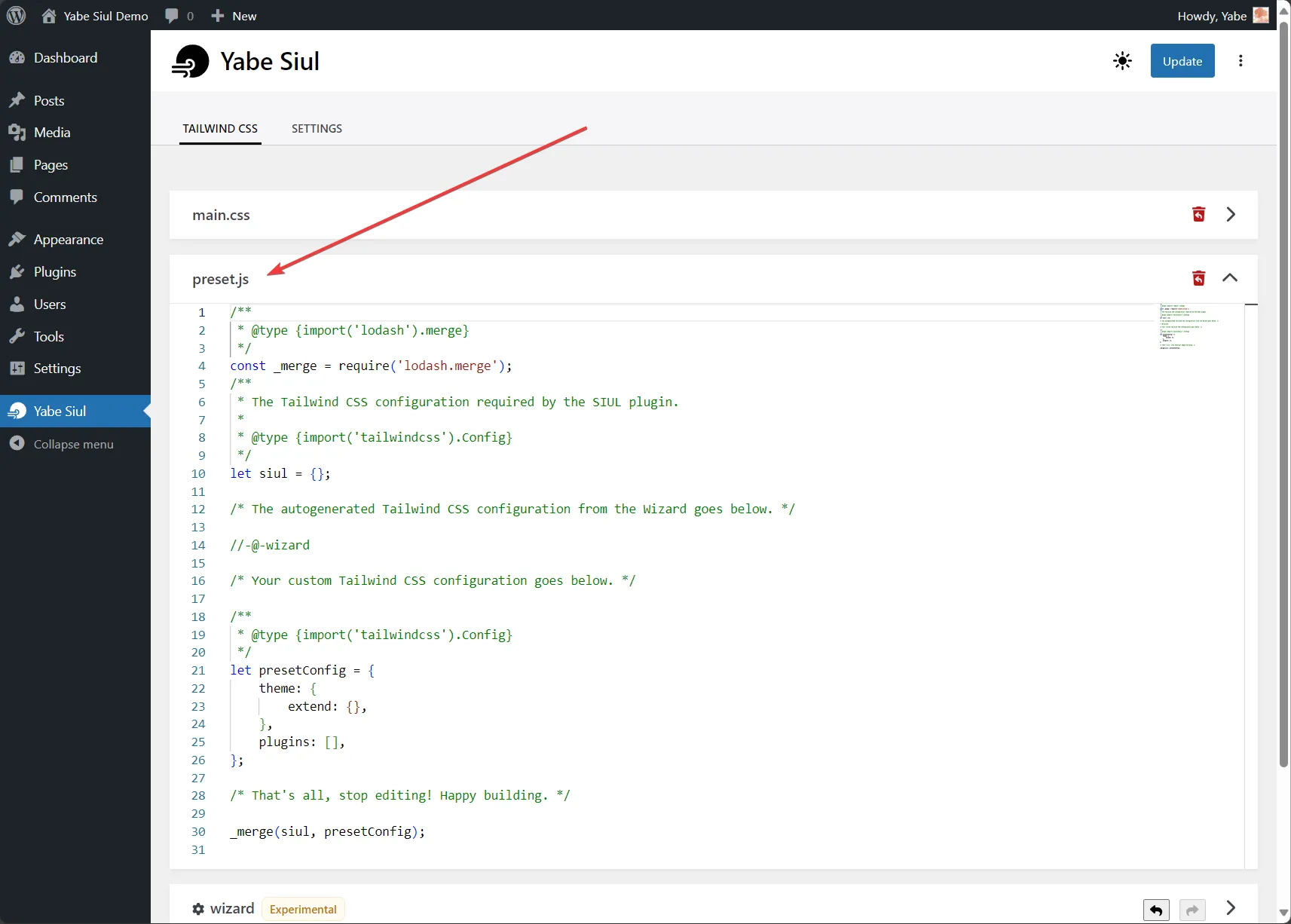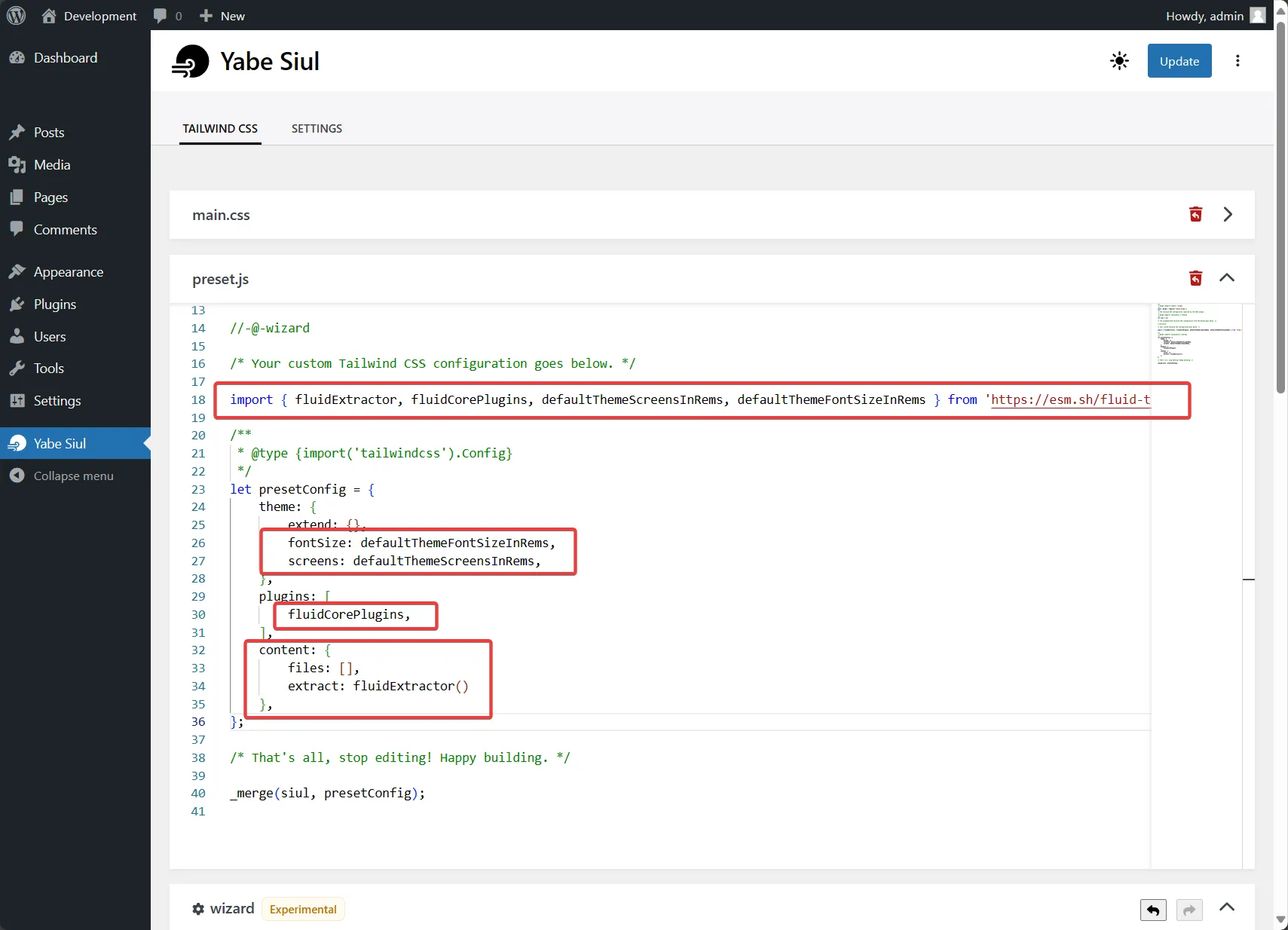fluid-tailwind
fluid-tailwind is a fluid clamp() plugin for Tailwind that works with every utility, allowing you to create smoother responsive styles in fewer classes.
Features
- Supports all core plugins out of the box (i.e. font size, margin, padding, width, etc.)
- Fewer classes than breakpoints (i.e. pt-4 md:p-8 lg:pt-10 )
- Ensures all fluid text meets accessibility requirements
- etc.
In this guide, we will show you how to use fluid-tailwind on WordPress websites using Yabe Siul.
Step 1: Open the Preset.JS panel
Section titled Step 1: Open the Preset.JS panelGo to Yabe Siul → Tailwind CSS and open the preset.js panel.

Step 2: Add the fluid-tailwind package as a Tailwind CSS plugin
Section titled Step 2: Add the fluid-tailwind package as a Tailwind CSS pluginImport the fluidCorePlugins from the fluid-tailwind package and add it to the presetConfig.plugins array.
Then add the fluidExtractor to the presetConfig.content.extract property.
To use the default theme screens and font sizes, you can import the defaultThemeScreensInRems and defaultThemeFontSizeInRems from the fluid-tailwind package and use them in the presetConfig.theme.screens and presetConfig.theme.fontSize properties.
import fluid, { extract, screens, fontSize } from 'https://esm.sh/fluid-tailwind?bundle-deps&external=fs';
/** * @type {import('tailwindcss').Config} */let presetConfig = { theme: { extend: {}, fontSize, screens, }, content: { extract }, plugins: [ fluid({ checkExtractConfig: false }), ]};
Step 3: Save the changes
Section titled Step 3: Save the changesSave the changes and you are ready to use fluid-tailwind on your WordPress website.
Please refer to the fluid-tailwind documentation for more information on how to using the fluid-tailwind or configuring it further.